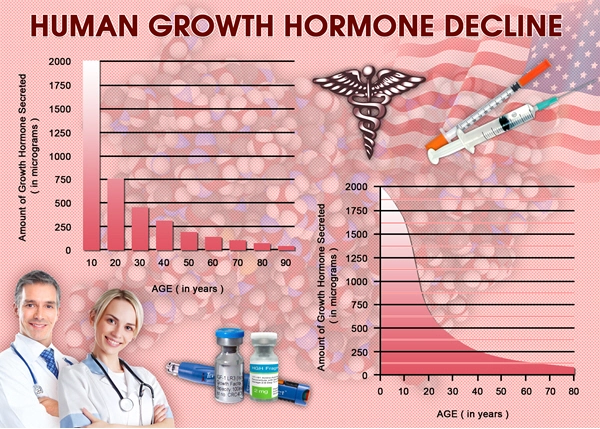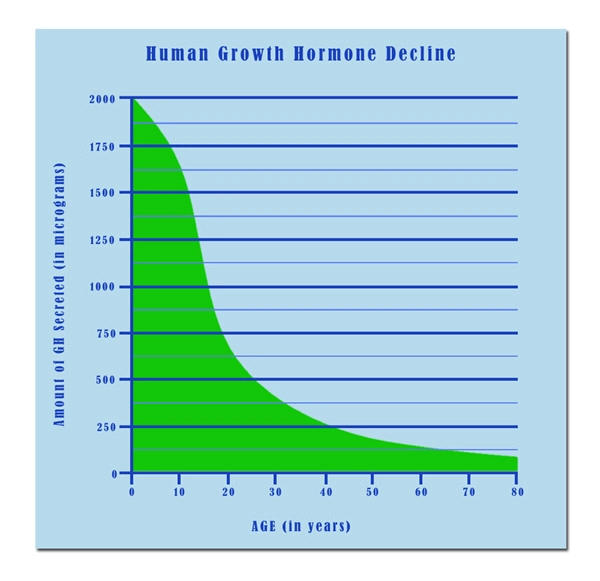
Introduction to Tamoxifen in Men's Health Context
Tamoxifen, commonly known for its role in breast cancer treatment, also has significant implications in men’s health, particularly in the management of gynecomastia and certain hormone-responsive tumors. As an antagonist of the estrogen receptor in breast tissue, it prevents estrogen from binding to its receptor, thereby exerting anti-estrogenic effects. This mechanism, while beneficial in some aspects, warrants a closer examination of its long-term outcomes in male patients.
Therapeutic Uses of Tamoxifen in Men
In men, tamoxifen is primarily used for the treatment of gynecomastia, a condition characterized by the enlargement of breast tissue. It is also employed in cases of male breast cancer, although rare, and as an adjunct therapy in the treatment of infertility. This versatility underscores its importance but also raises questions about the implications of its long-term use.
Long-Term Efficacy and Benefits
Studies have shown that tamoxifen, when used for extended periods, maintains its efficacy in the reduction of breast tissue volume in men with gynecomastia. Moreover, in the context of male breast cancer, tamoxifen has been effective in reducing recurrence rates and improving survival outcomes. Its use in infertility treatment has also been marked by improvements in sperm count and motility, suggesting a positive role in reproductive health.
Potential Risks and Side Effects
However, the long-term administration of tamoxifen is not devoid of risks. Men taking tamoxifen may experience several side effects such as weight gain, mood swings, and the risk of venous thromboembolism. More concerning is the potential increase in the risk of stroke and other cardiovascular issues. Additionally, there is a documented risk of developing cataracts, which necessitates regular ophthalmologic evaluations.
Impact on Hormonal Balance and Metabolism
Tamoxifen's interference with estrogen can also lead to alterations in hormonal balance, impacting bone density and lipid metabolism. These changes pose a risk for osteoporosis and cardiovascular diseases, particularly in older men who are already susceptible to these conditions. Regular monitoring of bone density and lipid profiles is recommended for those on long-term tamoxifen therapy.
Guidelines for Monitoring and Management
Given these potential risks, it is crucial for healthcare providers to establish a robust monitoring framework for men undergoing long-term tamoxifen therapy. This includes periodic assessments of cardiovascular health, bone density, lipid levels, and ocular health. Additionally, psychological evaluation might be necessary due to the potential for mood disturbances.
Conclusion and Future Directions
Tamoxifen remains a vital component of treatment for certain conditions affecting men’s health. However, its long-term use brings both benefits and challenges that require careful consideration and management. Future research should focus on optimizing dosing regimens, identifying risk factors for adverse effects, and developing strategies to mitigate these risks. As our understanding of tamoxifen’s long-term impact expands, so too will our ability to enhance the health and quality of life for men relying on this important medication.

- Understanding Tamoxifen's Role in Combatting Hormonal Cancers in American Men [Last Updated On: December 4th, 2025] [Originally Added On: February 16th, 2025]
- Tamoxifen: A Vital Tool in Treating and Preventing Breast Cancer in American Men [Last Updated On: February 18th, 2025] [Originally Added On: February 18th, 2025]
- Tamoxifen's Role in Reducing Breast Cancer Recurrence in American Males [Last Updated On: February 27th, 2025] [Originally Added On: February 27th, 2025]
- The Multifaceted Implications of Tamoxifen Therapy: An In-depth Review of Side Effects [Last Updated On: March 2nd, 2025] [Originally Added On: March 2nd, 2025]
- Comprehensive Overview of Tamoxifen: Applications in Breast Cancer Treatment, Preventive Therapy, and Beyond [Last Updated On: March 3rd, 2025] [Originally Added On: March 3rd, 2025]
- Exploring Tamoxifen's Role in Managing Men's Hormone-Driven Health Conditions [Last Updated On: March 5th, 2025] [Originally Added On: March 5th, 2025]
- Exploring Tamoxifen's Role in Treating Hormone-Sensitive Cancers in Adolescent Males [Last Updated On: March 6th, 2025] [Originally Added On: March 6th, 2025]
- Tamoxifen in Male Breast Cancer: Mechanism, Benefits, and Considerations for Treatment Success [Last Updated On: March 7th, 2025] [Originally Added On: March 7th, 2025]
- Unraveling Tamoxifen Resistance in Breast Cancer Therapy: Mechanisms, Impacts, and Strategies [Last Updated On: March 8th, 2025] [Originally Added On: March 8th, 2025]
- Optimizing Men's Health: Tamoxifen's Role in Pre and Post-Surgical Interventions [Last Updated On: March 9th, 2025] [Originally Added On: March 9th, 2025]
- Optimizing Tamoxifen Dosage for Effective Breast Cancer Treatment in American Males [Last Updated On: March 12th, 2025] [Originally Added On: March 12th, 2025]
- Tamoxifen's Potential in Treating Pediatric Cancers: Focus on Young American Males [Last Updated On: March 13th, 2025] [Originally Added On: March 13th, 2025]
- Unveiling the Risks: A Comprehensive Look at Long-Term Tamoxifen Use in American Males [Last Updated On: March 15th, 2025] [Originally Added On: March 15th, 2025]
- Tamoxifen Therapy in Males: Managing Drug Interactions and Enhancing Efficacy [Last Updated On: March 17th, 2025] [Originally Added On: March 17th, 2025]
- Tamoxifen in Men: Uses, Effects, and Management for American Males [Last Updated On: March 18th, 2025] [Originally Added On: March 18th, 2025]
- Tamoxifen's Role in Reducing Breast Cancer Mortality in American Males [Last Updated On: March 18th, 2025] [Originally Added On: March 18th, 2025]
- Tamoxifen's Efficacy and Impact on American Males with Breast Cancer [Last Updated On: March 19th, 2025] [Originally Added On: March 19th, 2025]
- Tamoxifen for Men: Benefits, Risks, and Breast Cancer Treatment Decisions [Last Updated On: March 19th, 2025] [Originally Added On: March 19th, 2025]
- Tamoxifen's Role in Inhibiting Cancer Growth: Insights for American Males [Last Updated On: March 20th, 2025] [Originally Added On: March 20th, 2025]
- Tamoxifen: A Vital Guide for American Men with Breast Cancer [Last Updated On: March 20th, 2025] [Originally Added On: March 20th, 2025]
- Tamoxifen's Role in Leukemia: Mechanisms, Clinical Evidence, and Future Prospects [Last Updated On: March 20th, 2025] [Originally Added On: March 20th, 2025]
- Tamoxifen's Role in Male Health: Managing Gynecomastia, Infertility, and Cardiovascular Risks [Last Updated On: March 21st, 2025] [Originally Added On: March 21st, 2025]
- Managing Tamoxifen Side Effects in American Men: Strategies and Support [Last Updated On: March 21st, 2025] [Originally Added On: March 21st, 2025]
- Tamoxifen's Efficacy in Treating Hormone-Sensitive Cancers in American Males [Last Updated On: March 21st, 2025] [Originally Added On: March 21st, 2025]
- Tamoxifen's Role in Treating Male Breast Cancer: Insights and Management Strategies [Last Updated On: March 22nd, 2025] [Originally Added On: March 22nd, 2025]
- Tamoxifen in American Males: Benefits, Risks, and Management Strategies for Breast Cancer [Last Updated On: March 22nd, 2025] [Originally Added On: March 22nd, 2025]
- Tamoxifen in American Males: Benefits, Applications, and Considerations in Hormone Therapy [Last Updated On: March 22nd, 2025] [Originally Added On: March 22nd, 2025]
- Tamoxifen's Expanding Role in Male Breast Cancer Treatment and Research in the U.S. [Last Updated On: March 22nd, 2025] [Originally Added On: March 22nd, 2025]
- Tamoxifen in Recurrent Cancer: Benefits, Challenges, and Monitoring for American Males [Last Updated On: March 22nd, 2025] [Originally Added On: March 22nd, 2025]
- Tamoxifen: A Vital Treatment for Men with Hormone Receptor-Positive Breast Cancer [Last Updated On: March 22nd, 2025] [Originally Added On: March 22nd, 2025]
- Tamoxifen's Role in Managing Estrogen Fluctuations in American Men [Last Updated On: March 23rd, 2025] [Originally Added On: March 23rd, 2025]
- Tamoxifen: Benefits and Myths for American Males with Breast Cancer [Last Updated On: March 23rd, 2025] [Originally Added On: March 23rd, 2025]
- Tamoxifen: A Vital Tool in Treating Male Breast Cancer in America [Last Updated On: March 24th, 2025] [Originally Added On: March 24th, 2025]
- Tamoxifen's Role in Treating and Preventing Male Breast Cancer in America [Last Updated On: March 24th, 2025] [Originally Added On: March 24th, 2025]
- Tamoxifen-Induced Depression in American Males: Mechanisms, Prevalence, and Management [Last Updated On: March 24th, 2025] [Originally Added On: March 24th, 2025]
- Personalizing Tamoxifen Therapy for American Men: Optimizing Outcomes and Quality of Life [Last Updated On: March 24th, 2025] [Originally Added On: March 24th, 2025]
- Overcoming Tamoxifen Resistance in American Males: Strategies and Insights [Last Updated On: March 24th, 2025] [Originally Added On: March 24th, 2025]
- Tamoxifen's Impact on Male Ovarian Function: Effects, Management, and Future Research [Last Updated On: March 24th, 2025] [Originally Added On: March 24th, 2025]
- Tamoxifen's Role in Enhancing Breast Cancer Cure Rates in American Males [Last Updated On: March 24th, 2025] [Originally Added On: March 24th, 2025]
- Exploring Tamoxifen Alternatives for Male Breast Cancer Treatment in American Males [Last Updated On: March 24th, 2025] [Originally Added On: March 24th, 2025]
- Tamoxifen Therapy in American Males: Strategies for Preserving Bone Health [Last Updated On: March 24th, 2025] [Originally Added On: March 24th, 2025]
- Genomic Predictors of Tamoxifen Response in American Male Breast Cancer Patients [Last Updated On: March 25th, 2025] [Originally Added On: March 25th, 2025]
- Tamoxifen: Revolutionizing Hormone Therapy for American Males with Cancer [Last Updated On: March 25th, 2025] [Originally Added On: March 25th, 2025]
- Tamoxifen: A Vital Treatment for Advanced Breast Cancer in American Men [Last Updated On: March 25th, 2025] [Originally Added On: March 25th, 2025]
- Tamoxifen's Role in Molecular Oncology for American Males: Benefits and Considerations [Last Updated On: March 25th, 2025] [Originally Added On: March 25th, 2025]
- Tamoxifen: A Promising Treatment for Rare Cancers in American Males [Last Updated On: March 25th, 2025] [Originally Added On: March 25th, 2025]
- Tamoxifen Drug Interactions: Critical Considerations for Male Breast Cancer Treatment [Last Updated On: March 26th, 2025] [Originally Added On: March 26th, 2025]
- Tamoxifen Therapy for American Males: Managing Early-Stage Breast Cancer [Last Updated On: March 26th, 2025] [Originally Added On: March 26th, 2025]
- Tamoxifen's Role in Treating and Preventing Male Breast Cancer: A Comprehensive Guide [Last Updated On: March 26th, 2025] [Originally Added On: March 26th, 2025]
- Tamoxifen: Reducing Tumor Size and Preventing Recurrence in American Males with Breast Cancer [Last Updated On: March 26th, 2025] [Originally Added On: March 26th, 2025]
- Tamoxifen's Role in Treating Endocrine Cancers in American Males: A New Frontier [Last Updated On: March 26th, 2025] [Originally Added On: March 26th, 2025]
- Tamoxifen: Hope and Treatment for American Men with Cancer [Last Updated On: March 26th, 2025] [Originally Added On: March 26th, 2025]
- Tamoxifen's Role in Revolutionizing Male Breast Cancer Treatment in America [Last Updated On: March 26th, 2025] [Originally Added On: March 26th, 2025]
- Tamoxifen's Long-Term Effects on Women's Health: Insights for American Males [Last Updated On: March 26th, 2025] [Originally Added On: March 26th, 2025]
- Tamoxifen: Preventing High-Risk Breast Cancer in Men [Last Updated On: March 26th, 2025] [Originally Added On: March 26th, 2025]
- Tamoxifen Use and Cataract Risk in American Males: A Detailed Analysis [Last Updated On: March 27th, 2025] [Originally Added On: March 27th, 2025]
- Tamoxifen: Gold Standard for Male Breast Cancer Treatment in American Men [Last Updated On: March 27th, 2025] [Originally Added On: March 27th, 2025]
- Tamoxifen's Role in Treating Hormonal Cancers in American Males: Efficacy and Future Prospects [Last Updated On: March 28th, 2025] [Originally Added On: March 28th, 2025]
- Tamoxifen's Impact on Endocrine Function in Male Breast Cancer Patients [Last Updated On: March 28th, 2025] [Originally Added On: March 28th, 2025]
- Tamoxifen: A Promising Non-Surgical Treatment for Gynecomastia in American Males [Last Updated On: March 28th, 2025] [Originally Added On: March 28th, 2025]
- Tamoxifen in Male Breast Cancer: Benefits, Risks, and Long-Term Considerations [Last Updated On: March 29th, 2025] [Originally Added On: March 29th, 2025]
- Tamoxifen's Molecular Dynamics in Treating Male Breast Cancer in American Males [Last Updated On: March 29th, 2025] [Originally Added On: March 29th, 2025]
- Tamoxifen Therapy in American Men: Balancing Risks and Benefits in Advanced Cancer Treatment [Last Updated On: March 29th, 2025] [Originally Added On: March 29th, 2025]
- Tamoxifen's Role in Treating Male Breast Cancer: Efficacy and Considerations for American Men [Last Updated On: March 30th, 2025] [Originally Added On: March 30th, 2025]
- Tamoxifen: A New Hope for Male Infertility Treatment in American Men [Last Updated On: March 31st, 2025] [Originally Added On: March 31st, 2025]
- Tamoxifen: A Vital Tool in Treating and Preventing Male Breast Cancer [Last Updated On: April 1st, 2025] [Originally Added On: April 1st, 2025]
- Molecular Determinants of Tamoxifen Therapy in American Males with Breast Cancer [Last Updated On: April 2nd, 2025] [Originally Added On: April 2nd, 2025]
- Tamoxifen Toxicity in American Males: Mechanisms, Risks, and Management Strategies [Last Updated On: April 2nd, 2025] [Originally Added On: April 2nd, 2025]
- Tamoxifen's Cardiovascular Impact on American Males: Benefits and Risks [Last Updated On: April 6th, 2025] [Originally Added On: April 6th, 2025]
- Tamoxifen's Role in Preventing and Treating Male Breast Cancer: A Comprehensive Overview [Last Updated On: April 6th, 2025] [Originally Added On: April 6th, 2025]
- Optimizing Tamoxifen Efficacy in American Males with Breast Cancer Using Adjunct Therapies [Last Updated On: April 7th, 2025] [Originally Added On: April 7th, 2025]
- Tamoxifen: Key Insights into Its Role in Male Breast Cancer Management [Last Updated On: April 7th, 2025] [Originally Added On: April 7th, 2025]
- Tamoxifen Therapy in American Males: Efficacy, Side Effects, and Prevention in Breast Cancer [Last Updated On: April 8th, 2025] [Originally Added On: April 8th, 2025]
- Tamoxifen's Efficacy in Advanced Male Breast Cancer: U.S. Case Studies [Last Updated On: April 9th, 2025] [Originally Added On: April 9th, 2025]
- Tamoxifen's Role in Chemoprevention for American Males: Efficacy, Risks, and Research [Last Updated On: April 9th, 2025] [Originally Added On: April 9th, 2025]
- Tamoxifen's Dual Impact on Endometrial Cancer in Male and Female Patients [Last Updated On: April 10th, 2025] [Originally Added On: April 10th, 2025]
- Tamoxifen's Untapped Potential: Benefits for Men's Health Beyond Breast Cancer [Last Updated On: April 11th, 2025] [Originally Added On: April 11th, 2025]
- Tamoxifen: A Vital Tool in Managing Breast Cancer in American Men [Last Updated On: April 12th, 2025] [Originally Added On: April 12th, 2025]
- Tamoxifen in American Men: Experiences, Side Effects, and Long-Term Health Impacts [Last Updated On: April 12th, 2025] [Originally Added On: April 12th, 2025]
- Tamoxifen's Role in Preventing Cancer in American Men: A Comprehensive Overview [Last Updated On: April 12th, 2025] [Originally Added On: April 12th, 2025]



List of USA state clinics - click a flag below for blood testing clinics.
Word Count: 473


















































